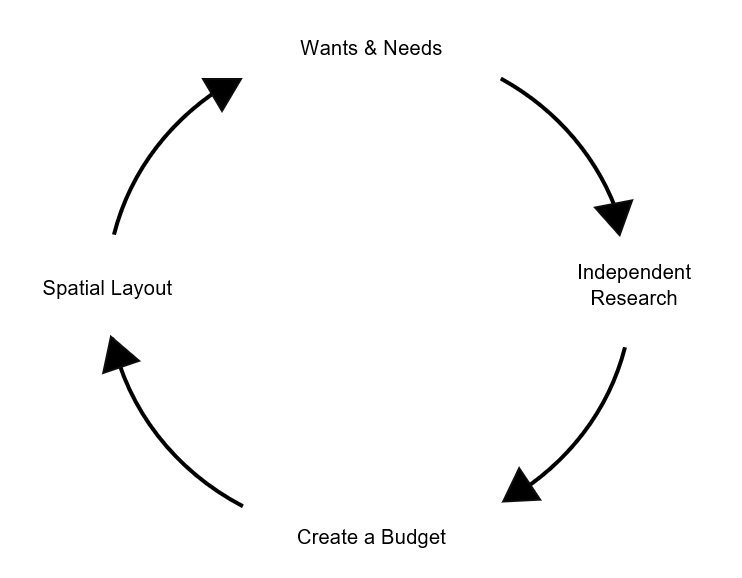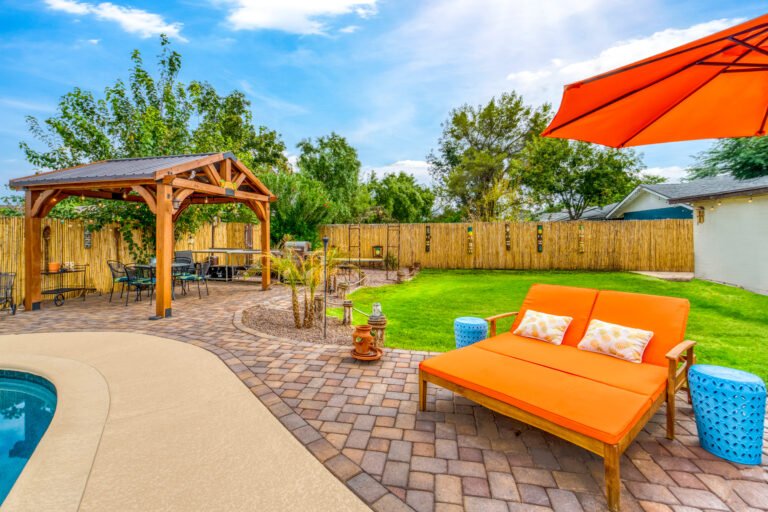When starting any project, it’s crucial to figure out what you want to accomplish and how to make it a reality. Starting a landscaping project is no different. It can be intimidating to start a large-scale project, but planning is always the first step. The diagram below is a basic approach to help you plan your dream landscape, along with a detailed description of what each step is.

Determining Your Wants and Needs
When determining your wants and needs, consider these questions. What do you want to accomplish with your landscape? How do you want to use the space? What style would you want to incorporate into your landscape? These are questions to ask yourself at the start of this process to help guide your ideas and allow you to confidently create a landscape that you will enjoy for years to come. It can be a place for social gatherings, a personal oasis, a family garden, etc. There are numerous ways to create a beautiful landscape, but here’s the time to find the best space for you. A few elements that you can add to your landscape are:
- Fire pit area
- Patios
- Covered Structures
- Outdoor kitchen
- Swimming pool/spa
- Storage shed
- Plant beds
- Pet space
Independent Research
Once you have established your wants and needs, some independent research can go a long way. This can generate ideas of how you want elements to look and what materials to use. Pinterest is a tremendous source to review different concepts to help you achieve your desired aesthetic. Do you want chopped stone bedding borders, or black steel edging? A wooden pergola made of cherry-stained cedar, or a pavilion with stone columns? Researching a general cost of the amenities that you are looking to build in your landscape is also a great way to understand what sort of budget you’ll be working with. Gathering concepts of what you want to build can also help a landscape designer create a cost-effective derivation of a desired element that’s within budget.

Creating a Budget
Building a budget can be troublesome, for it may limit how much you can do with your landscape. Don’t let that discourage you. Many landscaping projects can be broken up into phases to allow you to build what you need immediately and continue to add to it as time goes on. Using the information gathered from research will help you understand what your limitations are and what areas will be done in phases. Financing your landscaping project is also a possible solution in accomplishing your goals. Keep in mind that although prefabricated structures tend to be cheaper, custom structures tend to have a higher level of uniqueness and acquire a longer lifespan.
Envisioning a Spatial Layout
Now that you know what you want and how much you are willing to spend, it’s time to figure out where these elements are going to be placed. How large should the plant beds be? Where is the patio going to end? An easy method to figure this out is by using marking paint to separate your yard into areas, such as patios and plant beds. Envisioning the space allows you to play around with different layouts and movement patterns to make a functional design. Can you envision yourself in the space you are creating?

Hopefully this approach can help you answer those initial questions when it comes to planning a landscaping project. It’s important to view this process as a cycle rather than a linear strategy because it may take multiple iterations to achieve the best outcome for you. Whether you choose to design your own landscape or hire a professional design firm, such as here at Saylee Greer, this is the first step towards getting the landscape of your dreams!
